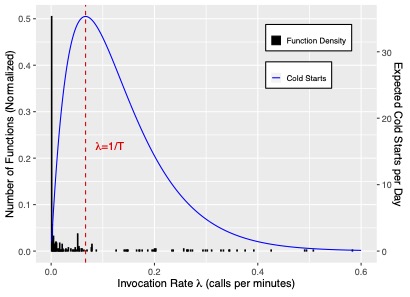HotSwap - Serverless Cold Start Optimization
Novel provider-side optimization for reducing cold-start latency in serverless computing
HotSwap is a groundbreaking provider-side cold-start optimization system for serverless computing that addresses the fundamental challenge of dependency loading during function initialization. This research introduces cross-function optimization strategies that respect vendor cache constraints while significantly improving cold-start performance.
Research Objectives
The primary goal is to optimize serverless cold-start performance by:
- Cross-Function Optimization: Developing strategies that benefit multiple functions simultaneously
- Dependency Sharing: Enabling efficient sharing of common dependencies across functions
- Cache Constraint Compliance: Respecting provider-side cache limitations
- Production Scalability: Implementing solutions that work at cloud scale
Technical Approach
HotSwap employs several innovative techniques:
Pre-Warming Strategy
- Live Dependency Migration: Transferring pre-initialized dependency images to new function instances
- Cross-Function Sharing: Single pre-warmed dependency image shared among multiple functions
- Cache Efficiency: Optimizing cache utilization while respecting vendor constraints
Performance Optimization
- Dependency Acceleration: 2.2x to 3.2x improvement in dependency loading for large functions
- Space Efficiency: 88% space savings compared to function-specific optimization methods
- Azure Trace Validation: Real-world validation using production Azure traces
Key Outcomes
This research has achieved:
- 2.2x to 3.2x acceleration in dependency loading for serverless functions
- 88% space savings compared to previous optimization methods
- Publication at IEEE CLOUD 2025
- Validation on seven representative functions from FunctionBench
Impact
HotSwap’s contributions are essential for:
- Performance Improvement: Significantly faster serverless function execution
- Cost Reduction: Lower cold-start penalties in serverless environments
- Resource Efficiency: Better utilization of provider-side caching resources
- Production Readiness: Scalable solutions for real-world cloud deployments
Related Publications
- HotSwap: Enabling Live Dependency Sharing in Serverless Computing (IEEE CLOUD 2025)

Figure: The relationship between invocation rate $\lambda$ and expected cold starts with keep-alive time $T=15$ minutes, using function distribution from Azure. Each serverless function was assigned to a bucket $[x, x+0.001]$, where the $\lambda$ of the serverless function was between $x$ and $x+0.001$ invocations per minute. The y-value for a bucket represents the normalized number of functions in that bucket, demonstrating the distribution of cold-start patterns across different invocation frequencies.